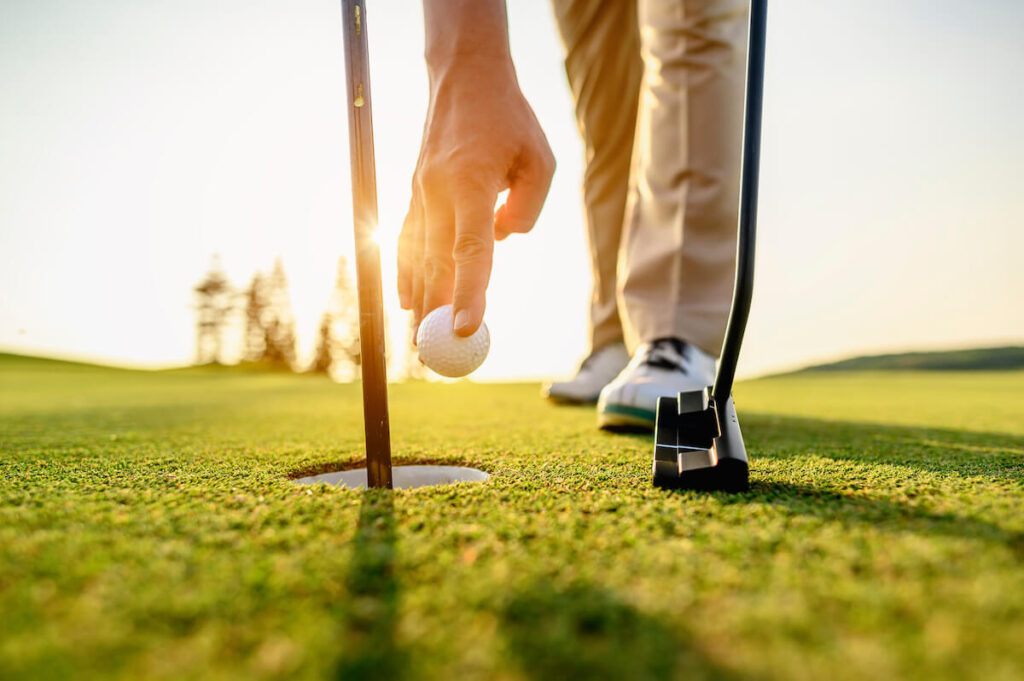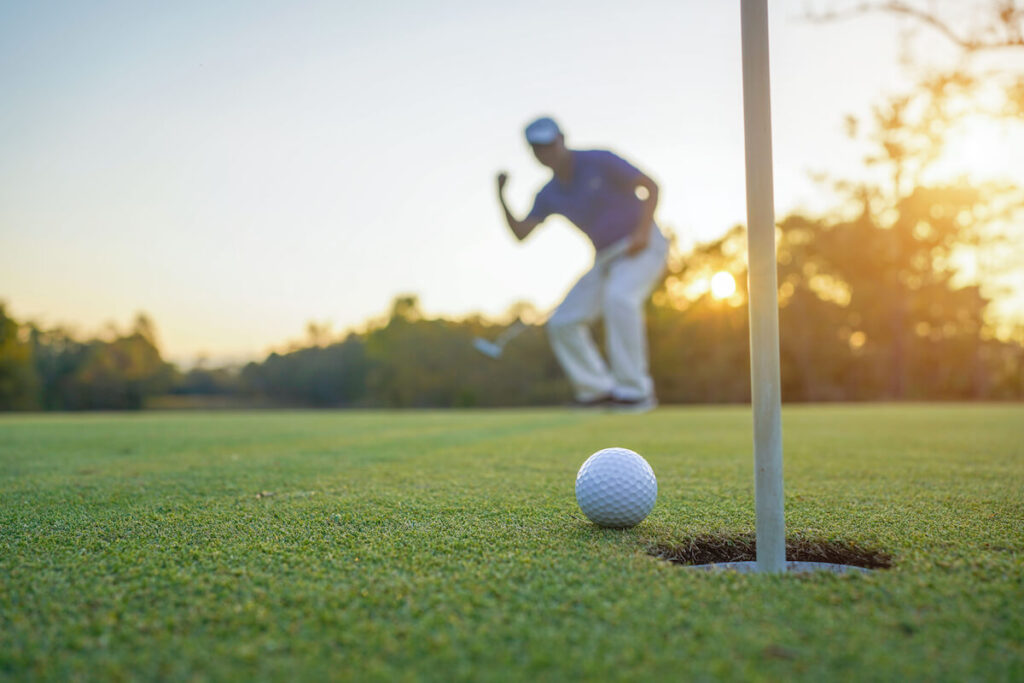What Length Putter Do I Need, and Why Does It Matter?
Posted by

If you walk into your local sporting goods store, you’ll likely find that there are putters of many different lengths. As a golfer in the market for a new putter, it’s important that you understand which length is right for you. Should you go with a short putter or a longer putter? Are there any other components to consider besides length?
In this article, we’ll answer some of the most commonly asked questions regarding new putters. We’ll start by answering the question, “What length putter do I need?” Then, we’ll cover why the length of the putter is critical and other things you need to consider when buying a putter.
What Length Putter Do I Need?
Though it may vary from one golfer to another, most putter lengths will be determined by height. Standard putter lengths are 33 inches, 34 inches, and 35 inches:
- 33-inch putters: For those between 5’2” and 5’4”
- 34-inch putters: For those between 5’6” and 5’8”
- 35-inch putters: For those between 6’0” and 6’2”
If your height doesn’t fall between these ranges, you can often buy putters that are longer or shorter than these standard lengths. If the putter is too long for you, choking down on the club is also an option many golfers try.
You can also consider finding a professional near you to conduct a putter fitting. A proper fitting will allow you to determine the correct putter length by taking into account things like:
- Your height
- Your personal putting stance
- Your address position
- Your personal preferences
- Your current putter
A club fitter will consider these factors and help you determine the type of putter that will best suit your golf game. If you like your current putter, a fitter could potentially cut or lengthen the shaft if it’s determined to be too long or short.
Why Is Having the Right Putter Length Critical?

Now that we’ve answered the question, “What length putter do I need?” let’s take a closer look at why having the right putter length is so important.
Putter length matters because it will put you at the proper point of address. When you address a putt, your eye position should be directly over the ball or inside of the ball. Your hands should be under your shoulders, and your elbows should rest on your midsection, near the bottom of your ribs. A proper point of address will allow you to maintain your target line.
If your putter is too short, then you will need to stand too close to the ball, which will subsequently put your eyes outside of the golf ball. If your putter is too long, you will need to stand too far from the ball, which could put your eyes too far inside of the ball. When your eyes are either directly above the ball or a bit inside of the ball, it is easier to line up your putt.
Should you find that you are consistently pulling or pushing putts, you may want to measure your putter length. You may find that you need to switch to a different putter or visit a club fitter to have your current putter fit to you. Once you have selected a proper putter, you can focus on drills to improve your golf putting.
However, having said all of that, putting ultimately is about feel. Golf can be a very mental game. The right putter length may be the one you feel most comfortable with.
That’s why even those on the PGA Tour use a variety of different putters. Some even use extra-long putters. (These were formerly known as belly putters, until the PGA Tour outlawed anchoring, which is the act of resting the top of your putter into your midsection.)
But remember, PGA Tour professionals have hit hundreds of thousands of putts in their life, between their training sessions and competitions. They are likely much more familiar with their putting stroke than an amateur golfer. Unless you are a lights-out putter and feel comfortable with your current equipment, you may want to be a bit more mindful about the length of the putter.
What Else Should I Consider When Buying a Putter?
Though it’s important to measure putter lengths, there are other things to consider when buying a new putter. Some of the things you’ll want to think about are the grip, the club head, and the weight of the putter. Let’s take a closer look at why each of those is important.
Putter Grip
You’ll find that there are many different types of putter grips available. According to grip manufacturer Golf Pride, there are three general grip types:
- Oversized grips are for those who prefer to have less hand and wrist action during their putting stroke.
- Midsize grips will offer similar performance, though they allow you to have a bit more feel of the club than an oversized grip.
- Standard putting grips are for those who prefer to use their hands and wrists in their putts.
When exploring putters, you’ll also discover that there are different grip shapes as well. Again, putting is about feel. Visit a store or your local golf course, and try different putter grips. If you find a grip that you like, your local course pro or club fitter may be able to swap out the grips on your current putter. You can purchase a new grip and have it placed on your current putter without having to buy an entirely new club.
Putter Head
Typically speaking, there are three different types of putter head designs:
- Mallet
- Blade
- Heel-toe weighted putters
Mallet putters may be ideal for amateur golfers, as they have lower centers of gravity and can help you overcome off-center putts. They also tend to come in various shapes and with different types of alignment aids.
Blade putters are for those with straight putting strokes. They tend to be very sensitive and much less forgiving. Having proper distance control is critical when using a blade putter.
Heel-toe weighted putters are a subset of blade putters. Though they are sensitive, like blade putters, they carry a bit more weight in the heel and toe, which makes them more forgiving than blade putters.
Putter Weight
Another component to consider is the weight of the putter. The weight is determined by the putter head and the shaft. A heavier putter will result in a heavier swing weight. If you have a heavy swing weight, your putting stroke will be more like a pendulum, which can result in a smoother stroke. A lighter putter, on the other hand, will allow for more feel and will be more sensitive to slight changes in your putting stroke.
Having a Putter That’s the Proper Length Can Help Your Short Game

When it comes to improving your game, having the right golf equipment is critical. It’s important that your clubs fit your body and your swing. This is one reason why you want a putter that’s the right length.
In terms of golf putters, your height will primarily determine the length of your putter. Shorter golfers will need a shorter putter shaft. Tall golfers will likely need a longer shaft. While a stock putter should work for most amateurs, a club fitter can help you determine your proper putter length and take your game to the next level.
If you purchase a new putter and need help improving your putting stroke, consider Skillest. Skillest offers virtual access to numerous golf coaches. You can sign up for live coaching sessions or send videos for feedback. Find the right coach today.
